The WerFault.exe error in Windows 11 can be a persistent issue, consuming significant system resources and affecting your computer's performance. While WerFault.exe is a legitimate Windows process used for error reporting, problems arise when it malfunctions due to various reasons, such as corrupted system files or malware. In this guide, we'll explore effective methods to fix the WerFault.exe error and get your system running smoothly again.
1. Run SFC and DISM
Running the System File Checker (SFC) and Deployment Image Servicing and Management (DISM) tools can repair corrupted system files that might be causing the WerFault.exe error. These built-in utilities are designed to scan and fix issues with your Windows system files.
Step 1: Open the Start Menu and type Terminal in the search bar. Right-click on the Terminal app and select Run as administrator.

Step 2: If prompted by the User Account Control, click Yes to grant administrative privileges.

Step 3: In the Terminal window, click the downward arrow (chevron) icon and choose Command Prompt to open it in a new tab.

Step 4: Type the following command and press Enter to run the DISM tool, which will restore the health of your system image:
DISM /Online /Cleanup-Image /RestoreHealth
Step 5: Once DISM has completed, type the following command and press Enter to run the System File Checker:
SFC /scannow
Step 6: After the scan is complete, restart your computer and check if the WerFault.exe error persists.
2. Update Windows
Keeping your Windows operating system up to date can resolve known issues and bugs, including problems with WerFault.exe. Updating ensures that you have the latest security patches and improvements from Microsoft.
Step 1: Open the Start Menu and click on the Settings icon (gear symbol).
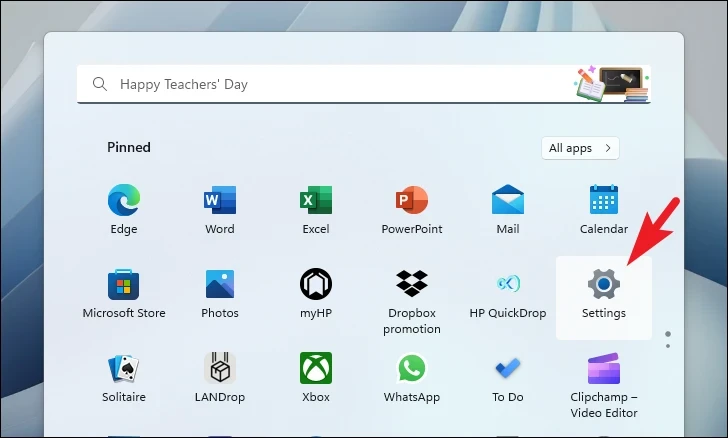
Step 2: In the Settings window, select Windows Update from the left sidebar.

Step 3: Click on Check for updates. If updates are available, click Download & Install.

Step 4: Once the updates are installed, restart your computer to apply the changes.
3. Run a System Scan
Malware or viruses disguised as WerFault.exe can cause high resource usage. Running a full system scan can detect and remove malicious software affecting your system.
Step 1: Open the Start Menu and type Security. Click on the Windows Security app from the search results.
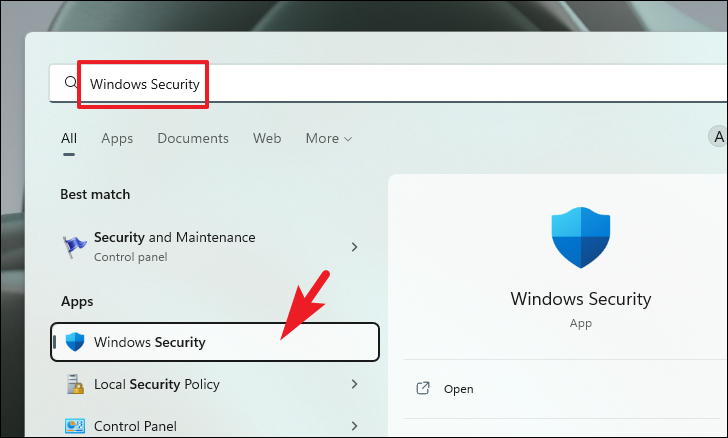
Step 2: In the Windows Security window, click on Virus & threat protection.
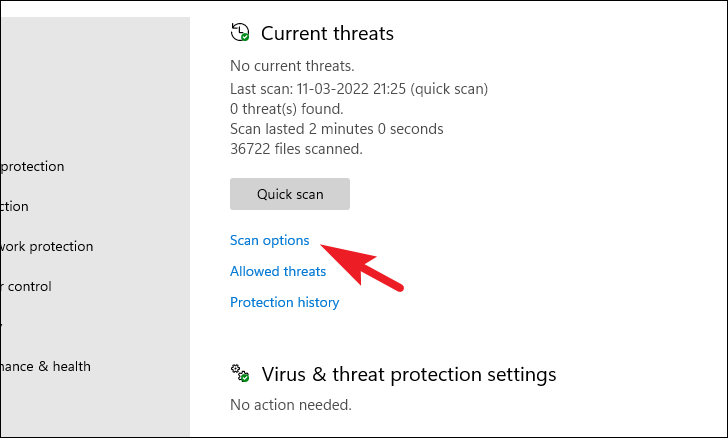
Step 3: Click on Scan options under the Current threats section.
Step 4: Select Microsoft Defender Antivirus (Full scan) and click Scan now to start a comprehensive scan of your system.
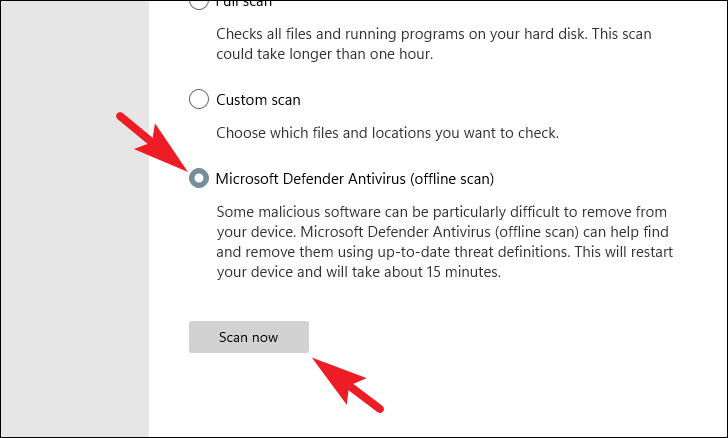
Step 5: Allow the scan to complete. If any threats are found, follow the prompts to remove them. Restart your computer afterward.
4. Update Drivers or Roll Back Drivers
Outdated or recently updated drivers can sometimes cause conflicts leading to the WerFault.exe error. Ensuring your drivers are up to date, or rolling back a problematic driver, can resolve the issue.
Step 1: Open the Start Menu and type Device Manager. Click on the Device Manager app from the search results.

Step 2 (To Roll Back a Driver): Locate the device category for which the driver was recently updated. Double-click to expand it, then double-click on the specific device to open its properties.

Step 3: In the Properties window, go to the Driver tab and click on Roll Back Driver. If the button is greyed out, a previous driver version is not available.

Step 2 (To Update a Driver): In the Properties window of the device, click on Update Driver.

Step 3: Choose Search automatically for drivers to let Windows find and install the latest driver. Alternatively, select Browse my computer for drivers if you have the driver file downloaded.

5. Run CHKDSK
The CHKDSK utility checks your hard drive for errors and can fix logical file system errors that might be causing the WerFault.exe issue.
Step 1: Open the Start Menu and type Terminal. Right-click on the Terminal app and select Run as administrator.
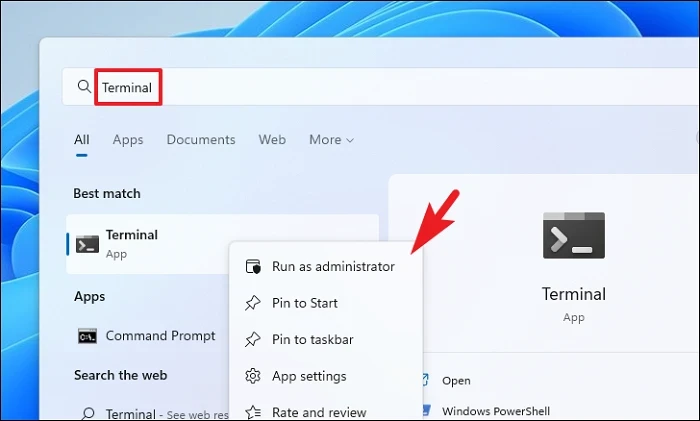
Step 2: If prompted by UAC, click Yes to proceed.
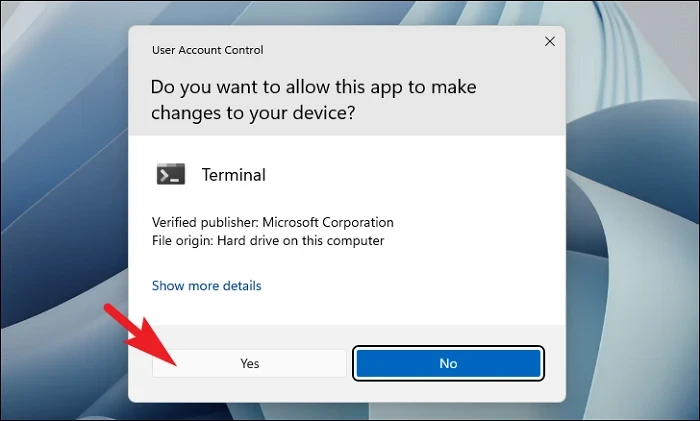
Step 3: In the Terminal window, click the chevron icon and choose Command Prompt to open it.

Step 4: Type the following command and press Enter:
chkdsk /f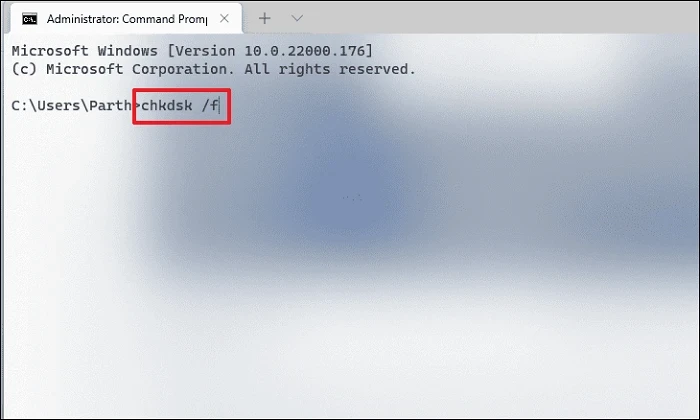
Step 5: When prompted to schedule the scan at the next restart, press Y and hit Enter.

Step 6: Restart your computer to allow CHKDSK to run and fix any disk errors.
6. Restart Your Computer
Sometimes, a simple restart can resolve temporary glitches or conflicts causing the WerFault.exe error. Restarting clears the system memory and can fix issues arising from recent updates or software installations.
For Laptops: Press and hold the Power button to force a shutdown. Wait a few seconds, then press the Power button again to start the laptop.
For Desktops: Press the physical power button on the CPU unit to shut it down, or unplug it if necessary. Wait a moment, then power it back on.
7. Run Windows Memory Diagnostics
Memory issues can cause system errors like WerFault.exe to occur. Running the Windows Memory Diagnostic tool can help identify and resolve problems with your RAM.
Step 1: Open the Start Menu and type Memory Diagnostic. Click on the Windows Memory Diagnostic app from the search results.

Step 2: Choose Restart now and check for problems to begin the memory test immediately. Alternatively, select Check for problems the next time I start my computer if you wish to run the test later.

Step 3: After the test completes, your computer will restart, and the results will be displayed upon logging in.
8. Perform a Clean Boot
Performing a clean boot starts Windows with a minimal set of drivers and startup programs, which can help identify if third-party applications are causing the WerFault.exe error.
Step 1: Press Windows+R to open the Run dialog. Type msconfig and press Enter.

Step 2: In the System Configuration window, select the General tab. Choose Selective startup and uncheck Load startup items. Ensure that Load system services is checked.

Step 3: Navigate to the Services tab. Check the box for Hide all Microsoft services, then click Disable all.

Step 4: Click Apply and then OK to save changes.

Step 5: Restart your computer. If the error no longer occurs, it indicates that a third-party service is causing the problem. You can enable services one by one to identify the culprit.
9. Roll Back to a System Restore Point
If the WerFault.exe error started occurring recently, rolling back your system to a previous state might resolve the issue. This method restores your system settings and files to an earlier point in time.
Step 1: Open the Start Menu and type Control Panel. Click on the Control Panel app from the search results.

Step 2: In the Control Panel, click on Recovery.
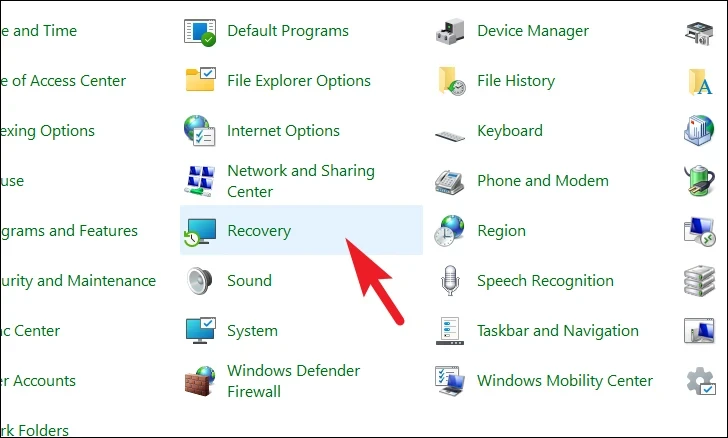
Step 3: Click on Open System Restore.

Step 4: In the System Restore window, click Next.

Step 5: Select a restore point from the list (choose a date when your system was functioning properly) and click Next.
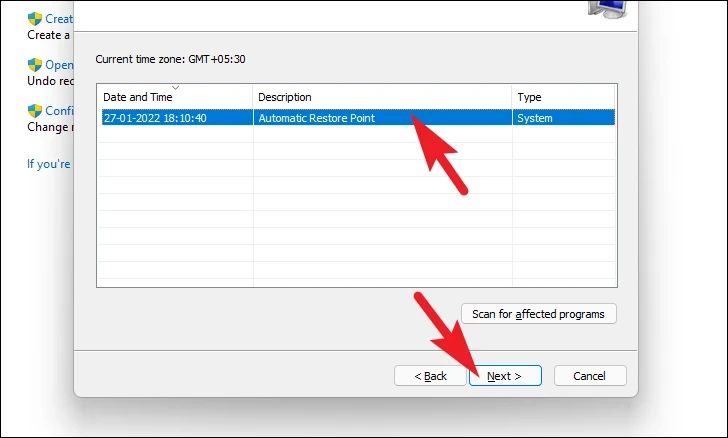
Step 6: To see which programs will be affected, click Scan for affected programs.
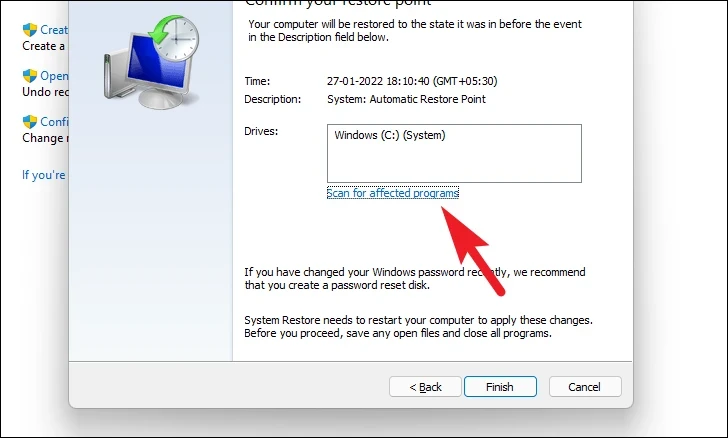
Step 7: Review the affected programs and click Close. Then, click Finish to start the restore process.
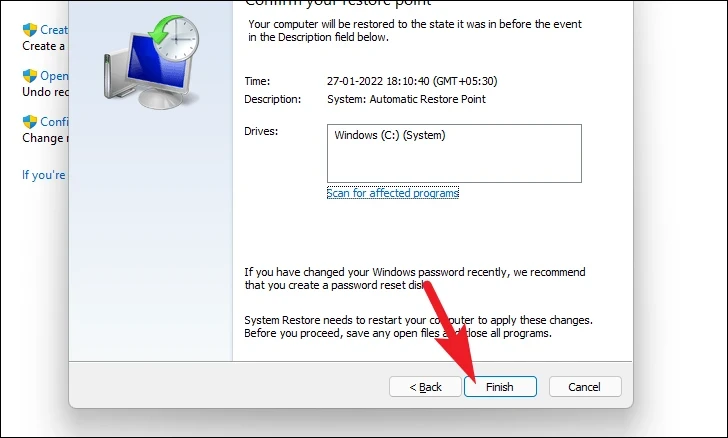
Step 8: Your system will restart, and the restoration process will complete. Check if the WerFault.exe error is resolved.
10. Disable WerFault.exe
If none of the previous methods have resolved the issue, disabling the Windows Error Reporting Service can stop the WerFault.exe error. Note that this will prevent error reports from being sent to Microsoft and should be used as a last resort.
Step 1: Open the Start Menu and type Services. Click on the Services app from the search results.

Step 2: Scroll down and locate the Windows Error Reporting Service. Right-click on it and select Properties.

Step 3: In the Properties window, set the Startup type to Disabled from the dropdown menu.
Step 4: Click Apply and then OK to save the changes.

Step 5: Restart your computer to apply the changes.
11. Reset Your PC
If all else fails, resetting your PC can resolve persistent issues by reinstalling Windows. This process lets you choose whether to keep your personal files while restoring system settings to their defaults.
Step 1: Open the Start Menu and click on the Settings icon.

Step 2: In Settings, select System from the left sidebar.
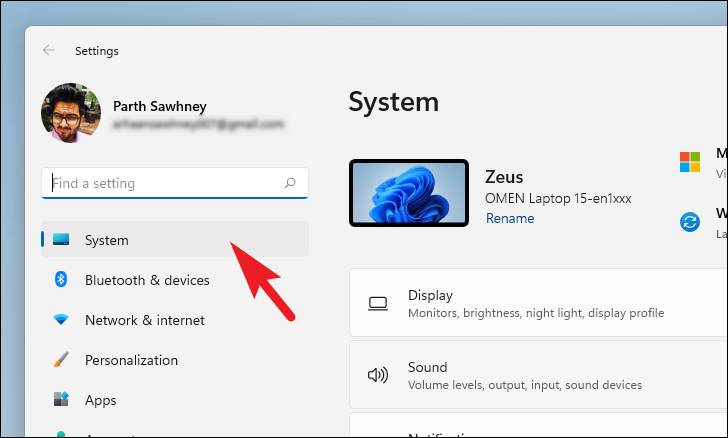
Step 3: Scroll down and click on Recovery.
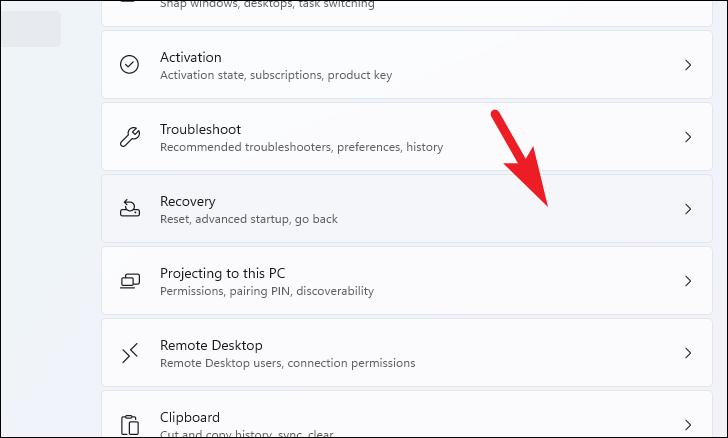
Step 4: Under Recovery options, click on Reset PC.

Step 5: In the Reset this PC window, choose Keep my files to retain your personal data while reinstalling Windows.

Step 6: Select Cloud download to download a fresh copy of Windows from Microsoft's servers.

Step 7: Review the reset settings. If you need to change any options, click on Change settings.

Step 8: Click Next, then review the information and click Reset to begin the process.
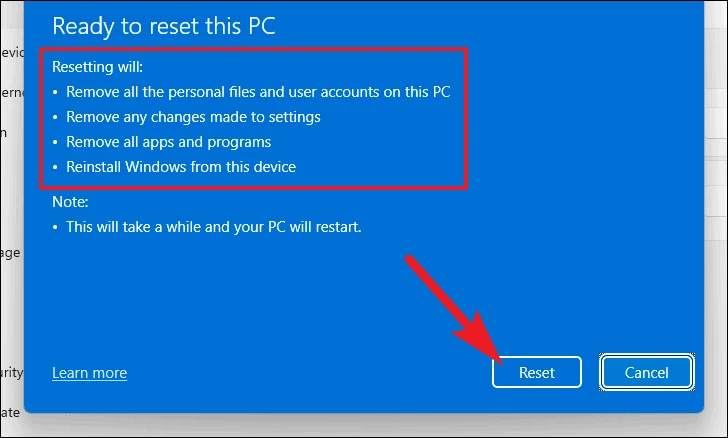
Your computer will restart several times during the reset process. Once completed, check if the WerFault.exe error has been resolved.
By following these methods, you should be able to fix the WerFault.exe error in Windows 11 and restore your system's performance.






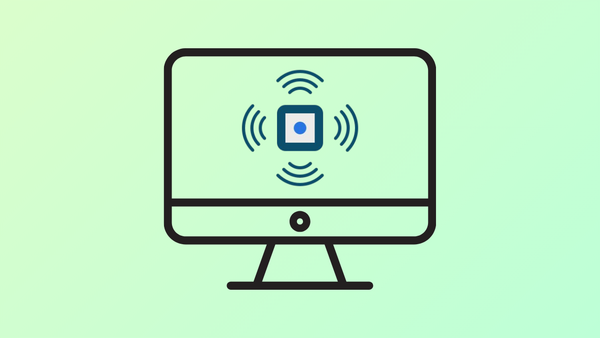




Member discussion